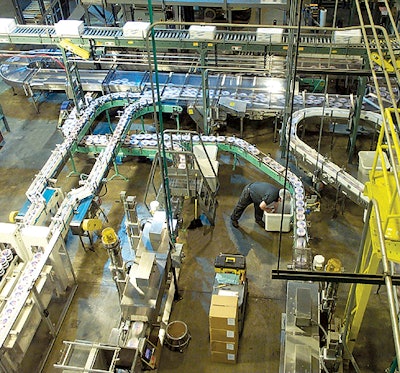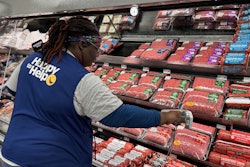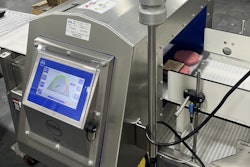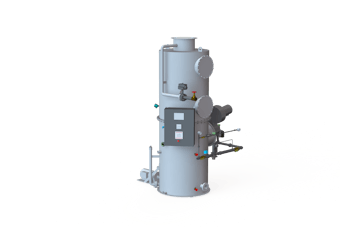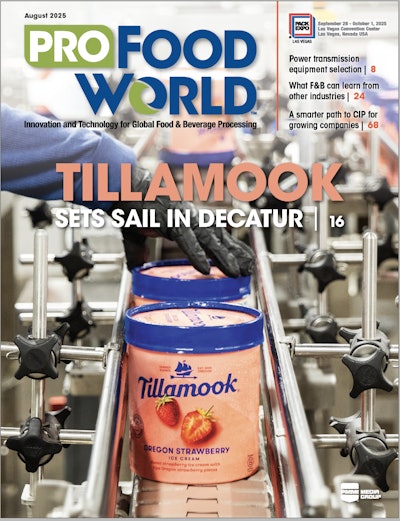When Steve Vogel joined Troy, OH-based Peak Foods as general manager, he was drawn to the private-label packager’s tamper-evident shrink-banding and case-packing operations. Because there was virtually no accumulation available for the flow of high-density polyethylene bowls filled with nondairy whipped topping, the 65’ of conveyor connecting those operations was a continuing problem. Even a minor problem would back up the bowls almost instantly, with stoppages immediately following.
“If a case packer, palletizer, or case printer stopped, there was nowhere for the bowls to go,” observes Vogel. He saw this as an opportunity that led to Peak’s efficiency improving in two areas:
• Accumulation was added. Peak installed an Infinity® accumulation system from Garvey between tamper-evident banding and stacking, which is just ahead of case packing. “That’s had the dual benefits of reduced labor and higher throughput,” says Vogel.
• TE banding operations were revamped. Peak switched out a four-head applicator with two three-head machines. The banders are located upstream of the Infinity system. Says Vogel, “The banders have greatly reduced our rejects.”
One bander is new, the other was rebuilt from four to three heads and upgraded with a new flight design (see sidebar).
Peak’s system applies shrink bands to injection-molded lidded bowls of private-label nondairy whipped topping for stores such as Sav-A-Lot. During Packaging World’s visit, the company was running 8-oz bowls.
Problem solver
“It’s best to keep the processing operations flowing without disruption from the packaging area,” explains Vogel. “When we would have a problem with one of the bander’s heads, production flow would drop 25 percent. But if the case packer had a problem, production would stop.”
The Garvey Infinity table was installed between the shrink-banding and case-packing operations. The 34’x8’ oval accumulator holds up to 552 bowls. It accepts more than two minutes’ of high-speed production of the 8-oz bowls, or three minutes of 12-oz, or more than four minutes of 16-oz bowls. Peak determined that the average interruption on the case packer is less than 30 seconds.
Operating using a single conveyor chain, the accumulator conveys via a proprietary loop-storage system that recirculates the bowls.
The TE-banded bowls are introduced to the accumulator from beneath and up through the center of the oval. The bowls then make a 180° turn. When there are no backups, they are conveyed directly out of the accumulator and on to a stacker just ahead of case packing.
If there are downstream problems that back up the bowls, they begin to accumulate in first-in, first-out fashion as the latest bowls are directed toward the inner portion of the Infinity’s conveyor belt.
“The nifty thing about Garvey’s design is the first-in, first-out flow,” emphasizes Vogel. “That’s important for our frozen product.” The line is located in an unchilled part of the plant.
When the downstream backup ends, the bowls continue on automatically and instantly. During their entire time on the accumulator, the bowls are kept in constant motion to avoid back-pressure in handling.
Peak added its own conveyor that accepts the overflow when the accumulator is full. “If we have a problem that exceeds our ability to accumulate, the most recent bowls on the Infinity table push the first bowls from the Infinity’s outside edge off onto the added conveyor that goes directly into our freezer,” explains Vogel. Those bowls are later manually reintroduced to the line.
Insulated accumulation
The bowls’ tapered sides tend to make them ride up on each other, Vogel explains. As a result, the Garvey conveyor was designed with solid sides rather than slotted guiderails. The accumulator also has a clear polycarbonate cover that acts like a lid to keep the bowls contained.
“That provides for very smooth bowl flow,” says Vogel. “The bowls are directed beautifully—they don’t jam in there anywhere. A secondary advantage of the cover is that it functions as an insulated chamber that helps to hold the product’s temperature. We had considered pumping in chilled air, but found we didn’t need to do that.”
The cover can be raised or lowered to accommodate the three different bowl sizes that Peak runs. The 8-, 12-, and 16-oz bowls all have the same footprint, but differ in height, from 2½’’ up to 4¾’’ high. A pneumatic switch lowers the entire cover to the proper height for changeovers in less than a minute. Changeovers occur maybe once a week, Vogel says.
Peak’s previous setup had two operators stationed in the general location where the Infinity system is now located. When the conveyor became full, those operators packed the excess bowls into bins that were later refed onto the line. These two workers were reassigned to other plant duties.
Besides the labor improvements, Vogel says that, unlike in a manual set-up, the Infinity system takes advantage of every opportunity to return a bowl to the flow. “Even a person standing there doesn’t have that kind of consistency,” he says.
The Infinity design works mechanically without photoeyes or any kind of control system.
“That’s one of the big advantages of the Garvey design versus other designs that we considered,” says Vogel. “It’s basically self-managing; it’s not dependent on bowls backing up to a certain point and being detected by photoeyes that actuate gates or some change in the equipment’s configuration. No eyes, no sensors, no switches. That’s very nice.
“Simplest is always best for equipment—that’s why the Garvey Infinity system was very appealing to me.” And what helps keep Peak at peak efficiency.
See sidebar to this article: Banding together
